Autoflower vs Feminized Seeds

Whenever you go to a marijuana seeds shop, the first thing you’ll notice is that about half the seeds on offer are feminized and the other half are autoflowering. Experienced growers know exactly what this means, but it might be baffling for beginners. In this post, we’ll explain the difference between autoflower vs. feminized to help you make an informed choice.
The feminized-vs-autoflowering distinction isn’t exactly grounded in science. Rather, it’s simply a useful convention. Cannabis seeds can be feminized, autoflowering, or both. Some of them are neither. To untangle this mess, it’s important to understand exactly what it means for seeds to be fem and what it means to be auto, which is exactly what this article will cover.
What are Feminized Seeds?
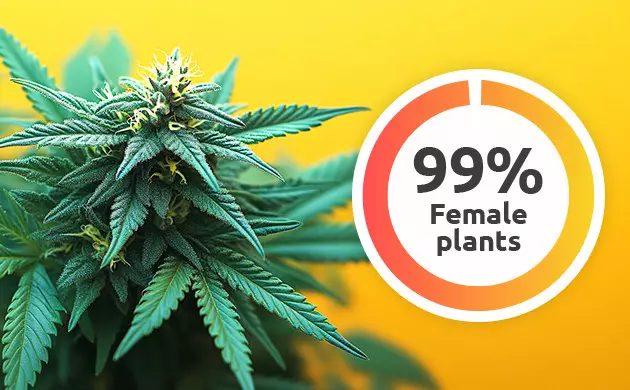
Feminized seeds mean that the seeds’ genetics were manipulated in such a way that they produce female cannabis plants only.
Don’t forget that, naturally, cannabis produces two distinct sexes, so when you buy regular seeds, you get both females and males, with a ratio of around 50/50. For those growers who only want to grow female buds to smoke, males are useless ballast and are therefore discarded as soon as they reveal their sex. Moreover, males even harm your harvest because they pollinate female flowers and make them go to seed. As a result, you don’t get sinsemilla (buds without seeds), so the flowers are less fat, dense, and resinous.
The alternative to feminized seeds is regular seeds – the ones we’ve already mentioned.
Pros and Cons of Feminized Seeds
Feminized seeds are the best option for you if:
- You want guaranteed higher yields of potent buds, as they ensure that you will have female plants only.
- You’re set to fully control the whole process of the seed you want to grow.
- You’re looking for consistent quality in your harvest, as feminized cannabis seeds produce uniform plants.
However, it’s also crucial to notice that feminized seeds also have their drawbacks:
- They are not suitable for breeding purposes.
- You should be patient while waiting for your harvest, which will take far longer compared to autoflowering plants.
- They can sometimes become hermaphrodites due to their poor genetics or environmental stress. As a rule, you get less viable clones and can only start from the seed in this case.
What Does Autoflowering Mean?
While the invention of feminized seeds led to the first revolution in this industry, the emergence of autoflowers was the second and arguably even more important one. To be autoflowering means the ability of cannabis plants to start to flower automatically – when they reach the age of about 2-4 weeks from sprouts or a certain size (a certain number of nodes).
Automatic flowering is a naturally evolved characteristic, but it was only discovered in one weed variety: Cannabis Ruderalis. This feral Siberian species has only a couple of summer months to rush through its whole life cycle, so it doesn’t waste any time. Breeders have used this amazing ability and crossed Ruderalis genetics with various commercial varieties. Autos are the result of this hybridization.
The alternative to this type of cannabis seeds is photoperiod strains – meaning all the rest of the cannabis varieties that only start to flower when they notice the days get shorter. This occurs at the end of summer outdoors or when the grower changes the light cycle to 12/12 indoors.
Pros and Cons of Autoflowering Cannabis

Autoflowering seeds are a brilliant invention, and their benefits are overwhelming:
- Outdoors, they can be planted at any time in the growing season and will finish in 70 days or less regardless of the light cycle.
- Indoors, you don’t have to maintain different light schedules for vegging and flowering plants.
- With more hours of light in bloom, autoflowers soak up more energy.
- They don’t need complete darkness at night, so light leaks won’t disrupt budding.
- You’ll get your harvest in record time.
- The plants’ size is limited, which is great for small indoor setups or outdoor cultivation where you don't want to be discovered.
- Thanks to their Siberian genes, autos are cold-resistant and hardy.
The main drawback of auto cannabis plants is that the clock is always ticking for them, and whenever you stress or shock them, they won’t have time to recover and can stay small or even comically tiny.
Growing Feminized Seeds vs. Autoflowering
When people choose between autoflowering and feminized seeds, they’re really choosing between genetics that flower automatically and those that don’t. As you may have noticed, most autoflower seeds on the market are feminized too, meaning that they’ll only produce girls.
Go for so-called feminized (or, more correctly, feminized photoperiod) seeds if you’re fine with waiting for your harvest until fall outdoors or ready to switch to 12/12 indoors. It’s also a really nice option if you want bigger and consequently more high-yielding plants. In addition, sometimes a particular variety only comes in a photoperiod version.
Choose automatic cannabis varieties for any of the points given above where we talked about their pros. Plus, if you’re new to this game and doubt you have a green thumb, growing a photoperiod feminized variety can be less nerve-wracking. Whenever your inexperience deals a blow to a seedling or a vegging cannabis plant, you can nurse her back to health and take all the time in the world doing it – and when she recovers, you can induce flowering.
Plant Size and Shape
When comparing auto and fem cannabis plants, one significant difference lies in their size and shape. Autoflowering strains usually grow smaller and more compact, making them a perfect option for indoor cultivation or limited spaces. These plants reach heights of about 2 to 3 feet and have a bushy structure, which can be truly beneficial for stealthy cultivation.
Conversely, feminized plants tend to be larger, often exceeding 4 feet in height, and can develop a more elongated shape. This growth pattern allows for richer yields of potent buds but requires more space and careful training techniques to manage their height.
Training
In terms of training techniques, autoflowering and feminized cannabis plants each have their unique advantages. Autoflowering marijuana, having a shorter life cycle, benefits from gentle training methods like low-stress training (LST), as it allows them to maximize light exposure without causing stress. Since they automatically move from the vegetative to the flowering stage, growers often aim to keep their plants compact and bushy, allowing for an efficient use of space.
Feminized strains, which can be trained over a longer period, lend themselves well to a variety of techniques:
- Topping
- Super cropping
- SCRoG (screen of green) setups
These methods can significantly enhance yields by ensuring more even canopy growth and maximizing light penetration. Ultimately, the choice of training technique is up to you – it should align with the specific strain and your goals in terms of growing, ensuring a successful and rewarding cultivation experience.
Cloning
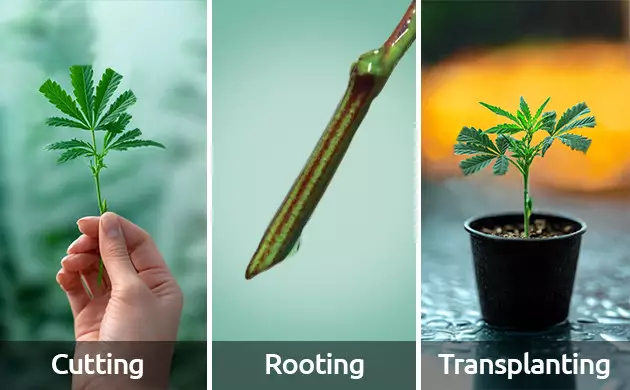
Cloning is the key difference between autoflower and feminized cannabis plants. Because of their automatic transition from vegetative to flowering stages, autos are not a great choice for cloning – quite the opposite. As their life cycle is shorter, the clones taken from these plants may not have enough time to establish themselves before the original plant flowers.
On the other hand, feminized strains are go-to candidates for cloning. They allow growers to reproduce a desired phenotype, ensuring that the new plants will also be female and carry the same desirable traits as the parent. This can lead to more consistent and productive growth, which makes them perfect for this goal.
Ultimately, while autoflowering plants offer speed and simplicity, feminized varieties provide the flexibility and reliability that many growers seek when considering cloning options.
Yields
Because of their shorter life cycle, autoflowers tend to stay smaller and yield less than feminized plants. However, autos are so popular that the best minds in breeding are always working on closing the gap between autoflowering and feminized weed seeds in important ways, including yields. At least in indoor setups, many modern auto cannabis plants can bring in the same yields per square meter as feminized plants.
Harvesting Time
Autoflowers have a shorter vegetative phase and a shorter flowering time. As a result, they’re about 30% faster indoors than feminized varieties. Outdoors, the difference in speed can be astronomical. If you plant both autoflower and feminized seeds in spring, the former will be ready in around 70 days, while the latter will only finish by around September or October. Feminized seeds require more time and effort.
Which is Better for Indoor or Outdoor Growing?
The answer depends on your goals and the details of your setup, but autoflowers are definitely less demanding. You can grow them successfully in smaller rooms with fewer bells and whistles. Outdoors, they’re great if you want a “quickie,” but if you don’t mind tending to your garden for the entire season, you’ll get huge trees with pounds of buds from feminized seeds, usually by early through late fall.
For growers in colder climates with short summers and rainy falls, autoflowers are the only option. Feminized “late bloomers” will simply have no time for germination before bad weather comes in and ruins them.
Top Fems in Our Collection
It’s a really difficult task when choosing between the best feminized seeds in our stock, but we’ve done it and picked a few that won’t leave any grower uninspired. Prepare for a true adventure with the two best feminized cannabis strains from our collection:
Bubba Kush (Barney’s Farm)
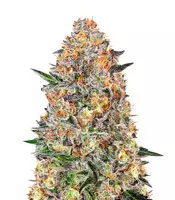

- Photoperiod
- 600 - 700 g/m² indoors
1500 g/plant outdoors - Dreamy buzz for hours
This 70% Indica, 30% Sativa hybrid delivers a super relaxing high that’s perfect for wiping out depression and anxiety. Its mix of sugar and spice makes Bubba Kush a real treat for cannabis enthusiasts. This plant is also extremely generous when it comes to yields – you can get up to 600-700g/m² (2-2.3oz/ft²) in indoor setups and a whopping 1.5kg (3.3lb) per plant outdoors. As for her effects, Bubba Kush is a perfect mix for indulging in a blissful haze while still being able to create and brainstorm ideas. A true treasure in the cannabis world, Bubba Kush contains an unbelievable 29% THC that’s definitely worth the hype.
Apple Betty (Herbies Seeds)
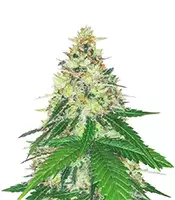

- Photoperiod
- Sugary psychedelia
- 600 - 800 g/m² indoors
2300 - 2600 g/plant outdoors
Classy and delicious, Apple Betty by Herbies Seeds is a crazy 60% Indica, 40% Sativa hybrid with up to 33% THC, sending you immediately into a psychedelic daze. Its lineage is also a true story to tell, as this strain is a combo of three famous varieties: savory Chem's Sister, Sour Apple, and rich, earthy Chocolate Diesel. True to its name, this weed will melt your heart with its notes of apple pie, cinnamon, wood, and chocolate. Even better, it’s a truly rewarding plant, yielding up to 2.6kg (5.7lb) per plant in just 65 days of flowering!
Our Top Autoflowers
When it comes to autoflowering strains, we at Herbies also have your back! Here are two fantastic options to experience the best out of autoflowers:
Godzilla Original Glue GG#4 Auto (Herbies Seeds)


- Autoflowering
- Giddy relaxation
- 550 - 650 g/m² indoors
70 - 300 g/plant outdoors
A true champ of the autoflowering realm, Godzilla Original Glue GG#4 boasts 27% THC, taking away all your anxiety. A perfectly balanced hybrid, Godzilla Original Glue GG#4 is truly impressive in terms of yields – you can expect 550-650g/m² (1.8-2.1oz/ft²) indoors and up to 300g (10.5oz) per plant outdoors. With its temptingly sweet, fruity, and spicy notes, this bud will give you blissful sedation and a euphoric state – so prepare for true immersion with this one, and don’t leave your snacks too far away, as you’ll definitely need them right after!
Strawberry Gorilla Auto (Fast Buds)
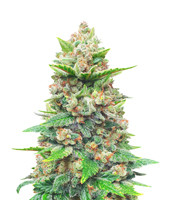
- Autoflowering
- Happiness intoxication
- 450 - 600 g/m² indoors
60 - 300 g/plant outdoors
This 55% Sativa, 45% Indica hybrid is one of the best autoflowering strains out there when dealing with stress and pain. With its mind-blowing 28.4% THC, Strawberry Gorilla hits you with euphoric chill vibes, followed immediately by total body relaxation. This variety is not only mind-blowingly potent but also very generous; it will bring you up to 300g (11oz) from just one plant outdoors and 450-600g/m² (1.5-2oz/ft²) indoors. Her aroma and flavor will leave you with a wonderful taste of freshly picked strawberries with a soft touch of guava, blueberries, and citrus on top.
FAQ
Are autoflowers less potent?
On average, they are. In the same genetic line, autoflower versions are less potent than their photoperiod originals. However, many state-of-the-art auto seeds are miracles of breeding and far more potent than those of past decades.
What's better: autoflower or feminized seeds?
Autoflowers are better in terms of speed, manageable size, and setup requirements. Feminized seeds are better when you want bigger plants, higher yields, and sometimes, more potent and flavorful smoke.
Autoflower seeds vs. feminized seeds: which is better for beginners?
Autoflowers are more straightforward to grow than feminized plants. You simply have fewer things to keep in mind. They also let you get your first harvest sooner. However, if you make any serious mistakes, autos are less forgiving and often have no time to bounce back. With photoperiod feminized varieties, you can always take your time before they get better. With autos, it’s often best to move on and start from scratch.
Is there a difference in weed quality between feminized and autoflowering plants?
This was a serious concern a couple of decades ago when autoflowering cannabis made its first appearance. Back then, autoflowers were bred for their speed and short stature alone and had little else to recommend them. However, by now, breeders have done such a great job that many autoflowers are as aromatic, tasty, and potent as any other weed you’ve ever tried. On average, they’re still a little behind, but the difference in quality is too small for most newbies to notice.
Are there seeds that are both feminized and autoflowering?
Absolutely! These hybrid seeds offer the convenience of automatic flowering, meaning they move from the vegetative to flowering stages without requiring a specific light cycle. At the same time, being feminized ensures that all plants will produce female flowers, maximizing your yields and minimizing the hassle of dealing with male plants. This makes feminized autos an excellent choice for both newbies and experienced cultivators. They’re perfect for you if you have space or time limitations, allowing for multiple harvests in a single season while maintaining quality and potency.
Herbies Head Shop expressly refuses to support the use, production, or supply of illegal substances. For more details read our Legal Disclaimer.




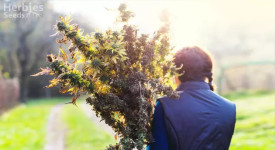
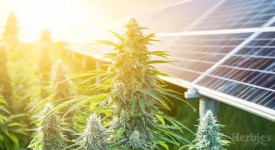
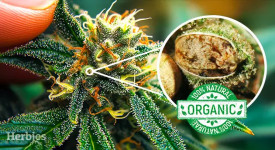


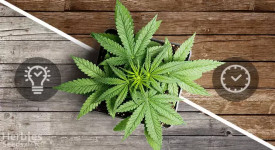
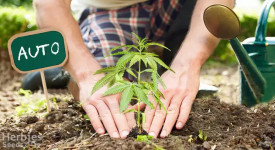
Thank you for leaving a comment for us!
Your feedback will be posted shortly after our moderator checks it.
Please note that we don’t publish reviews that: